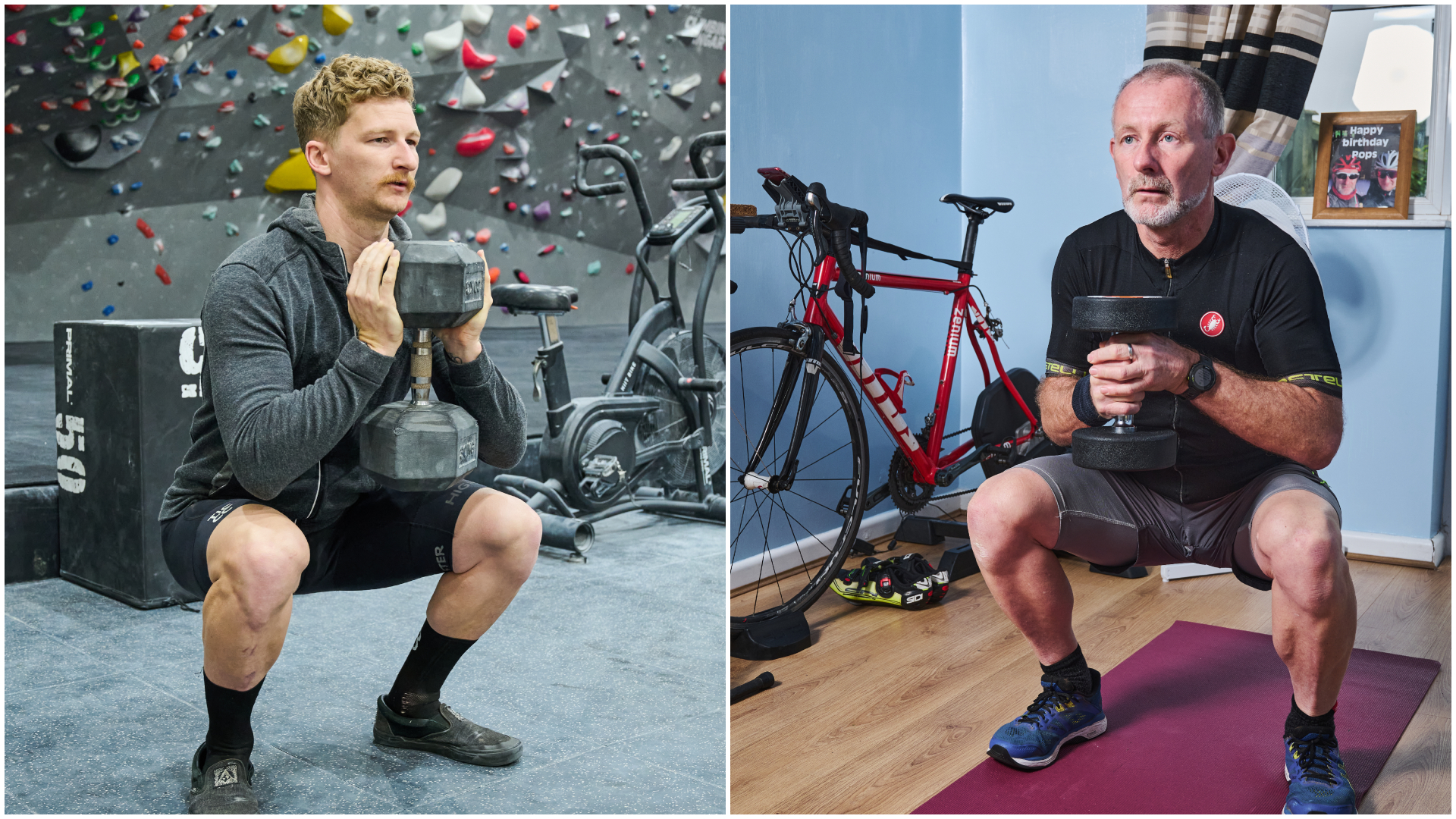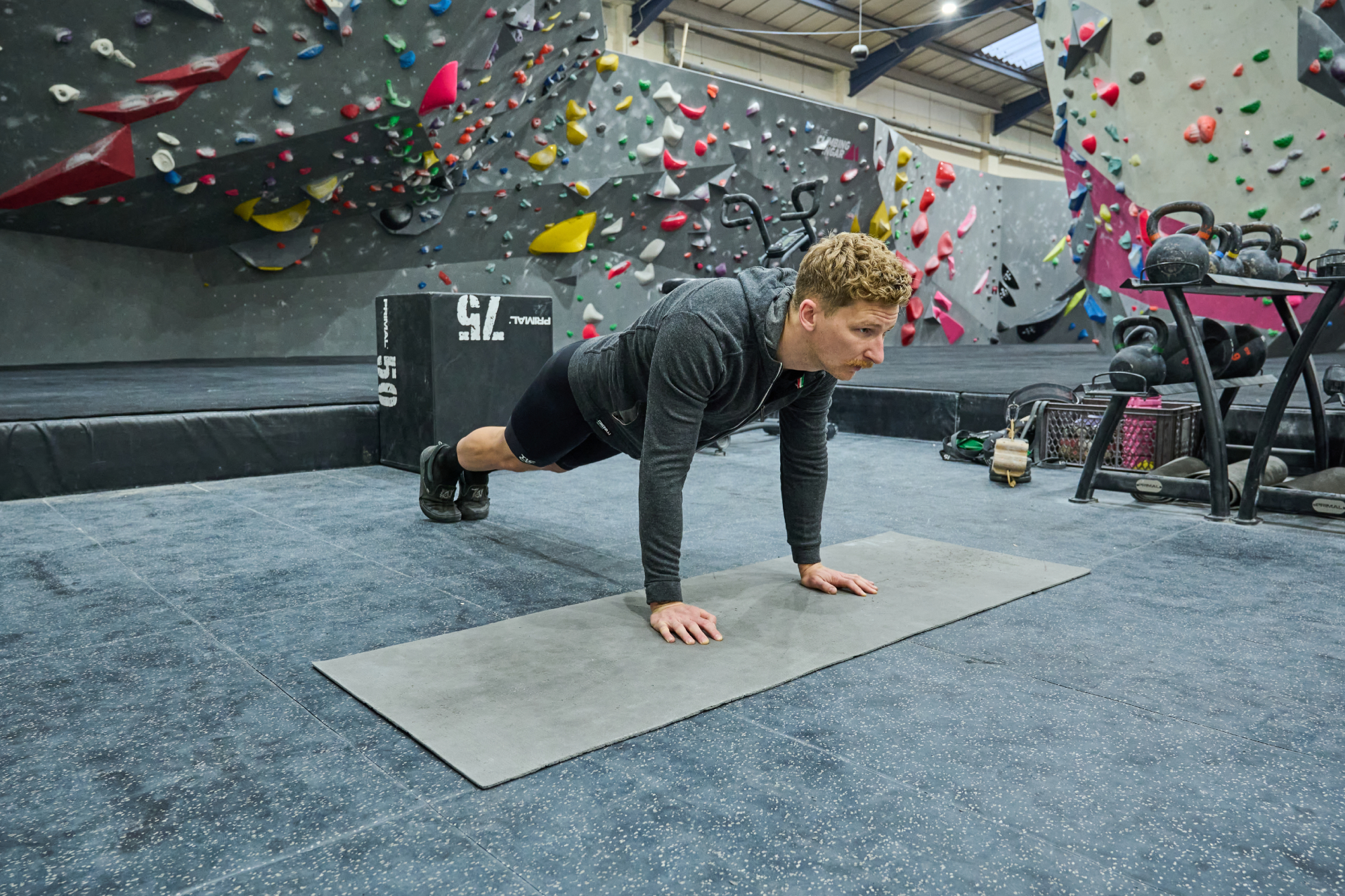
Strength training is practically a forbidden phrase among some cyclists. Mention the gym around your club-mates and you may be exposing yourself to a bombardment of criticism. Some two-wheel purists believe that lifting weights is only for the Instagram-obsessed fitness buffs more interested in abs than aero. In the past, even the professionals have been divided on their views on strength training for cyclists, but among the modern peloton, more and more elite riders are hitting the gym to boost their performance on the bike. Should all of us be following suit?
The pivotal question for time-crunched amateur riders is whether it’s worth investing hours that could otherwise be spent on our bikes. If you’re only able to ride two or three times a week, does sacrificing bike time to lift weights really pay off? In pursuit of answers, I decided to get stuck in with a cycling specific strength training programme. My mission: to undertake a six-week schedule to test if it was possible to boost cycling performance with just one short workout, on top of my cycling, per week.
Aware that the benefits of weight training are potentially even greater for older riders, I decided to rope in my dad, Tony, who at 60 is still a strong rider but, like me, was interested in targeting strength specifically.

We called on the help of strength and conditioning coach Chris Peden – who has worked with world-class riders Elynor and Zoe Backstedt and Tiffany Cromwell – to help create a plan and guide us through the process. We would continue riding consistently – at least twice a week, with a mixture of intensity and endurance – but with the addition of a 30-minute full-body strength workout.
Set your expectations

Before starting any training programme, there are two key steps to consider: First, you need to ask yourself what you’re hoping to achieve, and secondly, you must understand the process required to get there. Before starting our training programme, our S&C expert Peden was keen to help us understand exactly what strength training can do for cyclists: “One of the biggest benefits is that it helps give you the capacity to express your athleticism,” he said. “By helping you become more robust as an athlete, you can handle higher levels of training load with less fatigue.” This sounded like a major gain – and he hadn’t finished. “Strength training will also help raise the capacity of the muscular system so that it can produce and resist higher levels of force, meaning you can become more powerful but also be more resilient to the overuse injuries that cyclists are prone to from the fixed position and highly repetitive nature of cycling.”
With the positives out of the way, Peden sounded a note of caution: it would not be as simple as ‘lift weight, gain watts’. Instead, many of the benefits of strength training are indirect, and the real performance boost comes when strength work is combined with consistent training on the bike. So what were we hoping to achieve heading into our experiment? For me, I was looking to recover some previous form after a fairly cycling-light summer. Having focused on long-distance events earlier in the year, I really wanted to reclaim some watts. For my dad, regaining motivation was a key cycling goal, along with boosting his FTP: “Lately I’ve been trying to rekindle the motivation to cycle at least twice a week,” he said. “In previous years, I’ve raced regularly on Zwift, attaining a reasonably good FTP for my age of 272 watts. I’d like to get back to a similar level this winter.”
One of the commonest questions posed by cyclists is, ‘How do I minimise the slow-down as I get older?’ Research indicates that, for endurance athletes, performance peaks between the ages of 25 and 35. “Unfortunately none of us are immune to the negative effects of ageing,” said Peden, “one of those being muscle loss, which, beyond our performance on the bike, can affect our general quality of life. As we lose muscle, we’re more likely to be injured by trips and falls. Another common sign is the inability to stand up from a seated position unaided – these are all forms of power expression.” Our type-two, fast-twitch muscle fibres, the ones associated with explosive power, are the first to decline.
Bone health can also decline with age, especially in women, leading to a higher risk of fractures. Strength training helps maintain both muscle and bone strength later in life, keeping us more resilient.
Find your benchmark
To kickstart our experiment, we opted to use Wahoo’s flagship training programme SYSTM, and specifically the brutal but effective Full Frontal power test. This hour-long workout, tailor-made for the smart indoor trainer, involves four key elements: a full-gas five-second sprint, an all-out five-minute effort, a gruelling 20-minute classic FTP test, and finally a one-minute max power output, all within the space of one 58-minute workout.
After our initial test, my power profile suggested pursuiting was my strength, owing to my slightly stronger five-minute power in relation to the other efforts. Dad’s results suggested he was a rouleur, an all-rounder and master of all trades. But how would these power profiles change after six weeks of strength work?
Strength training for time-crunched riders is the subject of much debate. For amateur riders training less than 10 hours per week, some coaches believe that it’s beneficial to spend as much time as possible on the bike, and that a small amount of strength work is unlikely to have the desired cycling performance boost. Peden doesn’t agree. “It can be hard to fit it in if you’re being very detailed in your approach, but if you can spare 30 minutes once a week, then getting a few key exercises in will do wonders on and off the bike.” According to Peden, a rider’s peak power (six-second sprint), time trial performance and power at lactate threshold – three key predictors of cycling performance – have all repeatedly been shown, across multiple studies, to improve when a rider strength-trains.
He set us a workout routine tailored to getting the most out of our riding volume, pinned at around six hours per week. This meant doing just one strength workout per week, added on top of our existing riding time, and comprising a total of 146 sets, split across five warm-up exercises (completed twice each) and seven main exercises, including jumping, squats, dumbbell rows, to pushing movements, making for a full-body workout programme. While this may sound like an intimidating number of sets in total, each workout took only 25-35 minutes in total, depending on the amount of rest time taken. I generally opted for somewhere between 30-60 seconds of rest between sets, although you can rest for longer if needed. Sets typically comprised six to eight reps, depending on the movement.
Ready, steady, lift
The real joy of Peden’s workout regime was the ease with which it could be completed either at home or at the gym. While I had access to a full complement of weights in my local gym, dad was able to complete his workout even more easily, in the comfort of the living room, with just three sets of dumbbells, 10kg, 20kg and 30kg (weight per pair). My gym membership costs £23.99 per month and of course offers some benefits over a home weight set-up, most notably more space and a greater selection of weights to aid progression. Dad’s home workout set-up involves an initial cash outlay, but means you can get started without a monthly fee, and with the added convenience of training at home.

We both found that getting started on the strength training programme was a brilliant motivator. After a movement analysis session, which involved filming a series of workouts and sending them to Peden for review, we both felt we were in good hands and that the effort we were about to put into strength work was going to reap rewards. Peden built into the programme time for us to adapt the effort, making us feel challenged but never overstretched. The bodyweight exercises were a great way to work on control and really get the most out of each movement, while adding weights pushed us to grow stronger and more confident.
For dad, fitting in a 30-minute session at home was easily achievable. For me, the scheduling was more complicated owing to work commitments and commuting, but I always managed to complete the one strength workout a week. We found we were both excited to tackle the next session and see how far we had progressed.
4 key strength exercises for cyclists

1. 90 / 90 Hip Switch
A hip rotation mobility exercise. Sit on the ground with both knees bent at a 90-degree angle to each other. Rotate both legs until facing in the opposite direction. A brilliant exercise to improve hip mobility and loosen the lower back.

2. Countermovement jump
A vertical jump. Quickly squat to a chosen depth and then jump as high as possible, ensuring a smooth landing. An easily repeatable test of power output for cyclists.

3. Goblet squat
A simple squatting exercise that can be done with or without weight. With hips slightly wider than shoulder width apart, place the weight or your hands in front of your chest with your elbows tucked in. Lower to a chosen depth and return to the starting position. A versatile exercise that can easily be progressed as you grow stronger, using many key cycling muscles.

4. Bear plank shoulder tap
A core bodyweight exercise that focuses on muscles that support the spine. Start on all fours, and then lift your knees off the ground. Keeping your back flat (imagine you’re balancing a glass of water on your back), lift one hand off the ground and touch the opposite shoulder. Alternate hands. This strengthens the core to make you more stable on the bike.
What difference it made

Come the end of our six week training programme, it was time to reflect and find out how our cycling performance had been affected – with a follow-up Wahoo SYSTM Full Frontal test. On raw perception alone, I was con dent I had made significant strides in overall strength and mobility. I didn’t expect my power output to have massively improved, knowing that gains from strength work were often indirect. I was pleasantly surprised by the numbers, therefore, and how I was feeling on the bike. My results showed a 100W increase in sprint, 40W increase in five-minute power, and 20W boost to my FTP – I was back to being a TTer rather than a pursuiter.
Dad too was feeling stronger on the bike, and even more importantly for him, he has regained motivation to continue riding and training as we head into winter. Interestingly, the strength training shifted his SYSTM power profile from rouleur to sprinter – thanks to a 110W jump in his neuromuscular (five-second) power and a 40W increase in his five-minute power, while his FTP remained steady. “I’m definitely back on the bike more often and I’m holding the wheels and staying in the ‘blobs’ on Zwift easier than when I started six weeks ago,” Dad reflected, positively. “The strength training has definitely left me feeling stronger off the bike – less tired, with less stiffness and aches, particularly in my lower back, so I’m happier to ride more often.”
While our power gains are most likely reflective of good, consistent on-bike work, we both definitely felt stronger as a result of the strength programme. Lifting weights is not a silver bullet for cycling performance, but combined with consistent training on the bike, adding as little as 30 minutes of strength work per week can result in real, perceptible gains – as we discovered. Both Dad and I are determined to increase the amount of strength work in our training mix, having both noticed benefits to our riding as well as our day-to-day lives.
This full version of this article was published in the print edition of Cycling Weekly. Subscribe online and get the magazine delivered direct to your door every week.







